How to Light an Open Ceiling with Beams
Historically speaking, the guts of buildings were meant to be kept under wraps. With the exception of Timber Framing, and a stint during the 70’s where wood beams were left exposed as a testament to connection with nature, there was nothing beautiful, nothing admirable about a direct view into the framing of a home. Architecture as we know it today has manifested from what used to be all about finished surfaces, hidden duct work, and hidden structure to open ceilings exposed to all systems. Beams, joists, lintels, or any type of load bearing member that would typically be found buried behind closed ceilings are now becoming PART of the architectural design intent, and let me tell you, it is a lighting designer’s DREAM.
Almost every lighting design technique can be incorporated into a beam somehow: uplight, recessed downlight, pendant, graze, wash, track, etc. There are countless ways that exposed beams can be used as a platform to enhance the lighting, enhance the mood, in a room. Here is a glimpse into a few of those that we’ve successfully used on past projects.
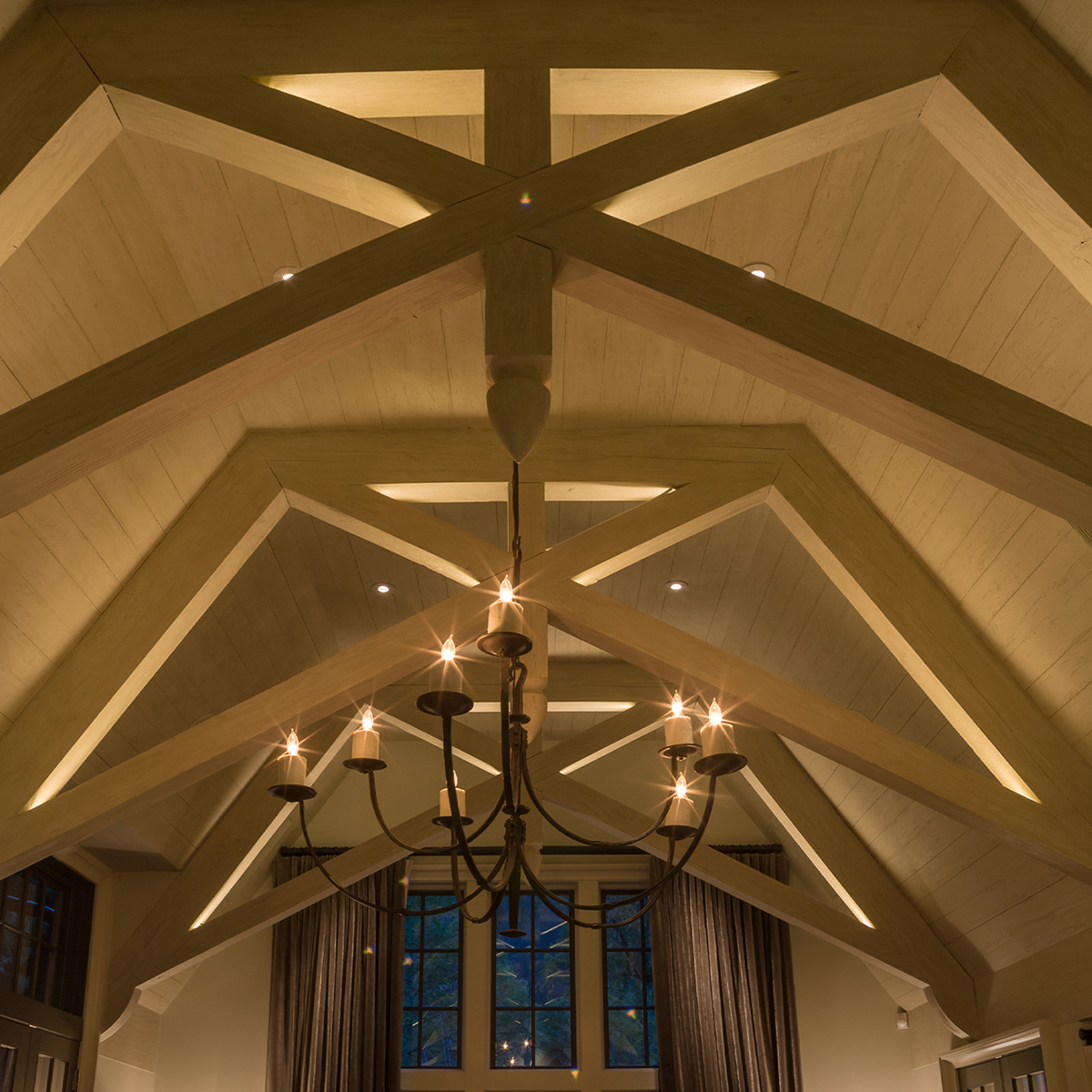
Indirect Linear Uplight
This technique is by far the most cost effective and dramatically altering solution. As a rule, when uplighting a ceiling, it will instantly make a space feel larger, grander, and more open. When a ceiling is uplit with indirect (no view) fixtures, well, now you’ve created mystery and appeal alongside the aforementioned enhancements. Because the linear lighting is out of sight, it does not need to physically look good, it just needs to perform. Therefore, money does not need to be spent on the way it looks. This is not to be confused with the way it is detailed. With linear uplight, the following should be taken into consideration: distance from light source to the ceiling, color/finish of the ceiling, how it is mounted to the beam, what angle it is mounted at, does the light source need optical control, and what is the output of the fixture. Even with accessibility to software that will calculate some of this, the surefire way to be certain of how it looks is to do a site mock-up.
Recessed Lighting
Downlights
Recessed downlights, also referred to as ‘can lights,’ are an ever-growing-constantly-changing product that should not be looked past when considering how to light a room using exposed beams. The flat surface, whether parallel to the floor or angled, is optimum platform that can be used to recess downlights. Square or round, the trim can typically be ordered or painted to match the finish of the beam, which in turn will cause them to disappear from a visibility standpoint. Downlights can be used to spotlight furniture, highlight artwork, or create general light levels.
Track Lighting
Track lighting in itself is great from a flexibility standpoint. It’s form factor, typically linear, works well in open ceiling with exposed beams. Track can be recessed into the bottom of a beam, mounted to the side of one, or hung at the same plane as beams. As mentioned previously, the flexibility of being able to move around a light fixture is great for retail, offices, restaurants, galleries, and other areas that could be altered in the future. Track lighting’s stigma of being big and bulky has since been dissipated. Track heads now come small, compact, and in dedicated LED with plenty of options for color temperature, finish, beam spread, and style.
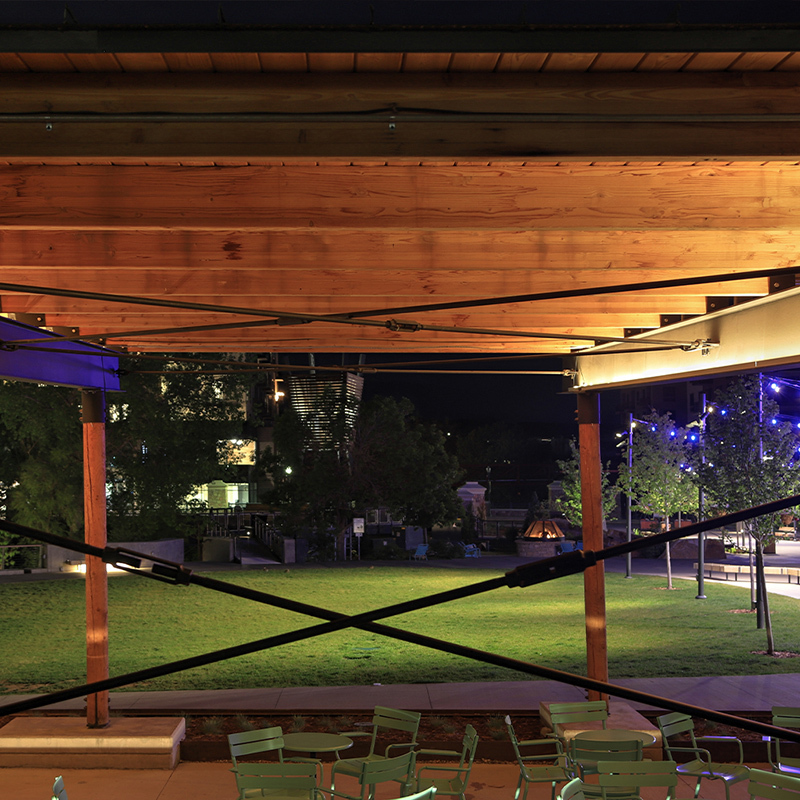
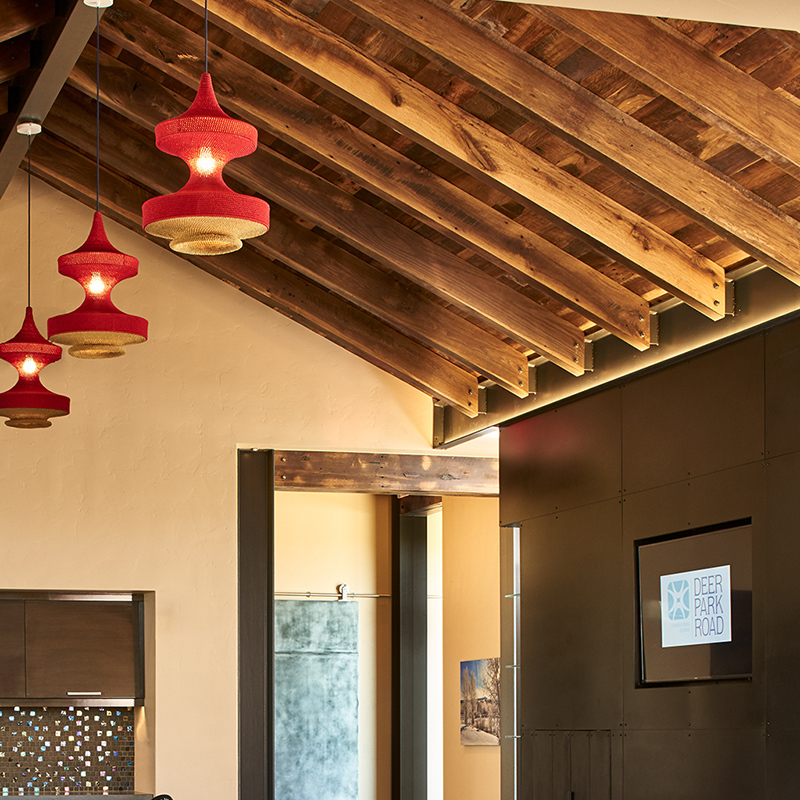
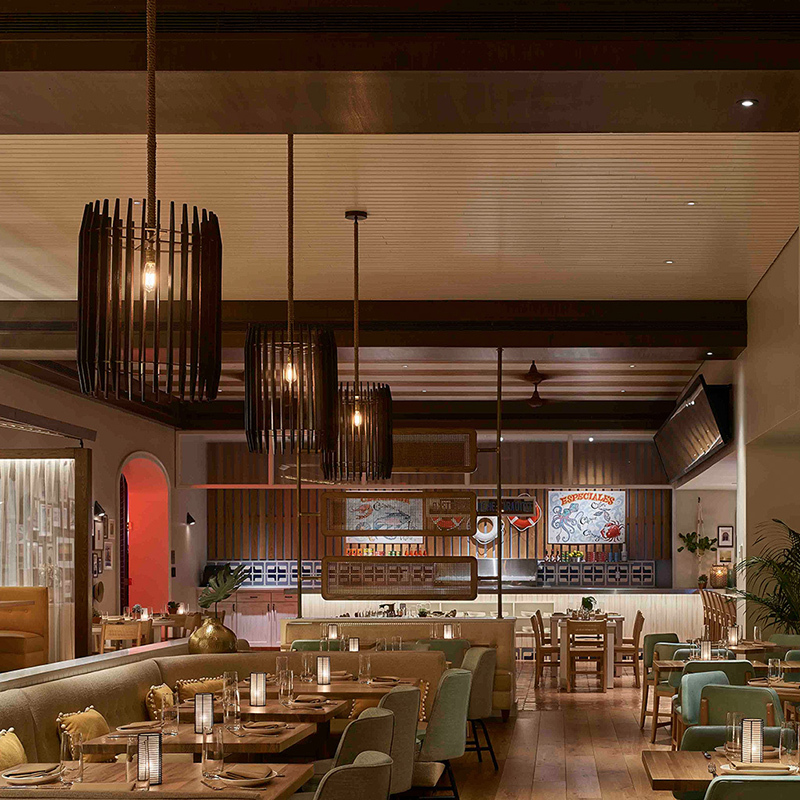
Point Source Grazing
For a more dramatic approach, point sources can be used to either graze across the beams, or illuminate the surface in between them. Instead of mounting something TO the beams and illuminating the surrounding surfaces, this design intent is meant to draw attention directly to the beams. With this, you will be creating visual interest by highlighting the architectural elements, making them a feature or focal point in the space. Ideally, these point sources would be recessed into a vertical surface with low visibility directly into the light source, but if recessing is not an option this can also be achieved with wall mounted fixtures. Point sources come in a variety of shapes, sizes, outputs, colors, and styles, but most important is the beam spread: the angle/degree of light that comes out of the fixture’s aperture. Depending on the mounting/location of the fixture, a wider beam will result in more of a ‘wash’ meaning the light will spread out more and cast a blanket of light on the materials being lit. With a narrower beam spread, the light will create a more dramatic ‘grazing’ effect. This is typically better when trying to emphasize a textured surface or to get the light to stretch across a lengthy distance.
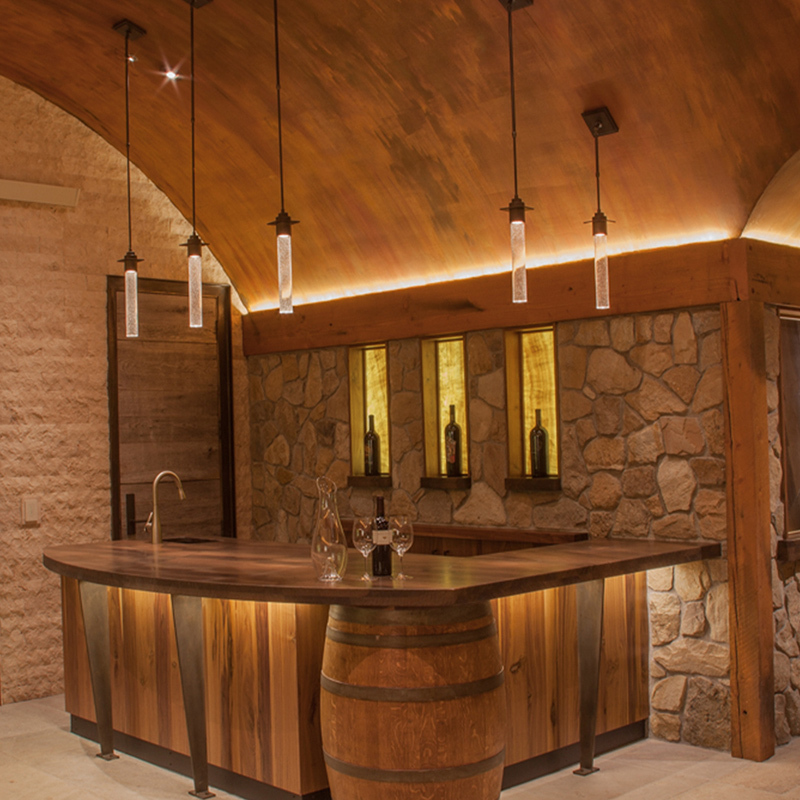
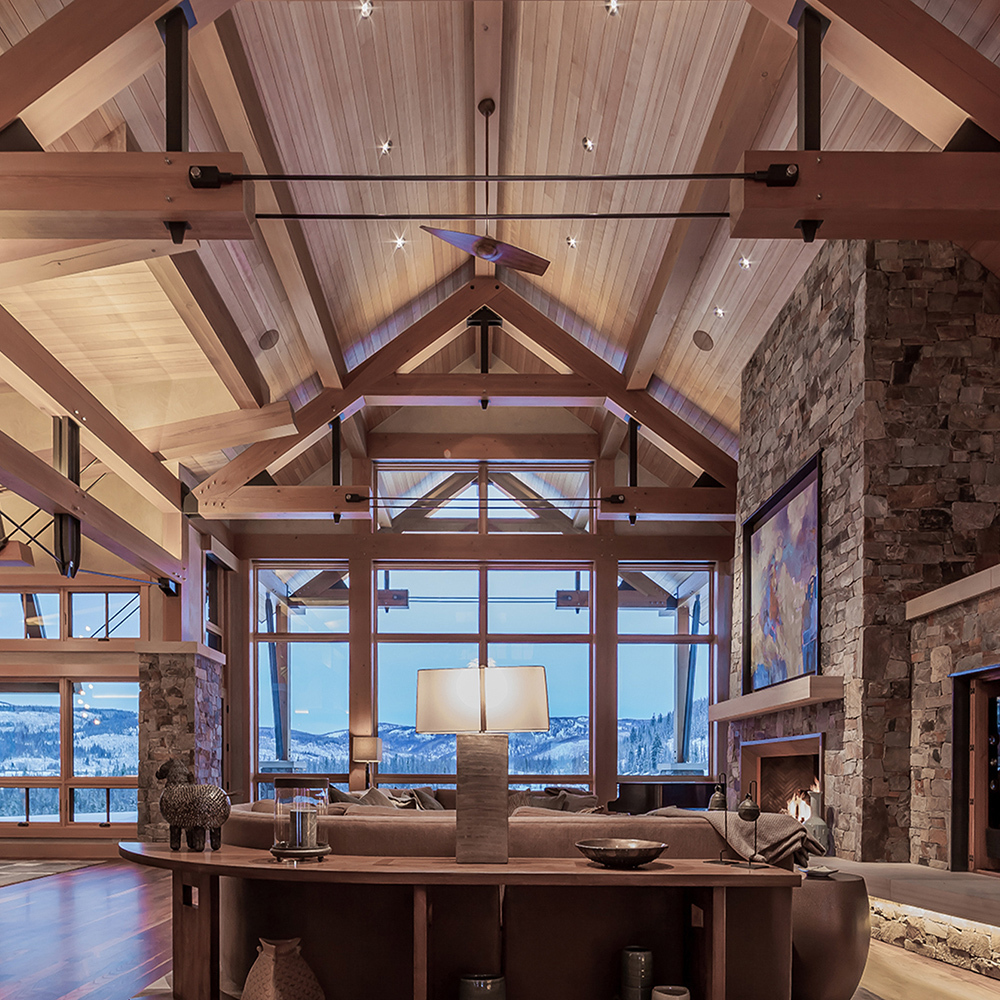
In general, we love using architectural elements to achieve a seamless lighting design. In most cases, we would rather use these elements than resort to traditional methods of recessed downlighting or as many call them “can lights.”
Until next time, nerds!
